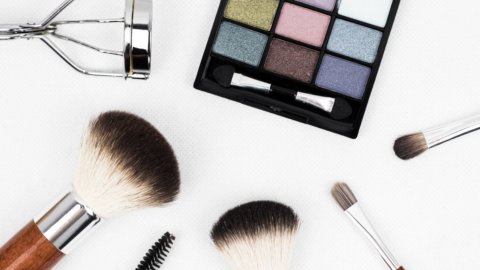The competitiveness of Italian cosmetic companies is high. This is what emerges fromanalysis by Intesa Sanpaolo's Studies and Research Department carried out on more than 1.000 companies companies specialized in the production and wholesale distribution of cosmetics, with a total turnover close to 11,6 billion euros. There is a good number of medium and large companies: in fact, there are 115 companies with a turnover of between 10 and 50 million euros and 43 with a turnover of more than 50 million euros. In the three-year period between 2016 and 2018, the sector's turnover rose by 14%. Foreign markets were the driving force where exports rose by about 30%. In just a few years, Italian cosmetics has brought its trade surplus to over 2,5 billion euros; this is an exceptional result, above all if we consider that we started from a slightly negative balance in the first half of the XNUMXs.
The levels of excellence expressed by companies in the sector in terms of profitability stand out: in 2017 the EBIT margin for cosmetics manufacturing companies was 8,8%, 2,7 percentage points more than the Italian manufacturing sector. Only pharmaceuticals did better with 9,6%. The high unit margins have allowed companies in the sector to strengthen their capitalisation, which has risen to around 30% (as a % of total liabilities), five percentage points more than in 2015. The excellence of the sector is confirmed by the high number of companies that are champions in terms of growth and profitability: in fact, there are more than 130 cosmetics companies that in the three-year period 2015-'17 recorded an increase in turnover of more than 15%, creating employment and showing an EBITDA margin in 2017 of more than 8%. The diffusion of champion companies out of the total companies in the sector is approximately 20%, approximately double the manufacturing average, with peaks exceeding 30% among medium and large companies.
John Foresti of the Studies and Research Department of Intesa Sanpaolo and curator of the study, commented: "The presence of a particularly favorable environment for the cosmetics industry is also evident from the vitality of its production fabric which over time has seen the consolidation of historic companies and the continuous emergence of new highly competitive players. The latest balance sheet data confirm this dynamic: just think that the almost 200 Italian companies specializing in cosmetics and born between 2010 and 2014, recorded a double increase in turnover compared to mature companies. It is too early to say whether these entities will be the leaders of tomorrow, but certainly their rapid affirmation, if accompanied by an adequate capital strengthening, will be able to make an important contribution to Italy's success on international markets”. “These results are not accidental, but are the result of targeted investments in communication, quality, sustainability, safety, internationalisation, technology and human capital. The share of cosmetic companies with internationally registered trademarks, quality certificates, patents, foreign subsidiaries and environmental certificates is significantly higher than the Italian manufacturing sector as a whole. It is no coincidence that in this sector the weight of intangible fixed assets is four times as much as the Italian average”.
They are twelve Italian provinces highly specialized in cosmetics: in order Lodi, Cremona, Parma, Rome, Bergamo, Milan, Florence, Monza and Brianza, Como, Bologna, Turin and Padua. There is a high concentration of companies in the sector in Lombardy where a series of factors has favored the creation of a highly specialized meta-district, strong in high chemical skills, creative contamination with other Made in Italy sectors (such as fashion and design), ability to anticipate trends, to offer innovative products of the highest quality, highly personalized and customizable and accompanied by attractive packaging.
“Through the use of an internal database on the payment flows managed by our customers through our network, it was possible to reconstruct the Italian cosmetics supply chain. From the analysis of just under 310.000 purchase transactions for a value of 2,4 billion euro it was possible to verify the presence in Lombardy of a production fabric specialized in cosmetics and organized in a branched supply chain, based on typically district supply relationships. It is no coincidence that Lombard companies specializing in cosmetics show very close average distances in the procurement of goods and services, equal on average to 74 kilometers (vs. an Italian average of 125 kilometres), with minimum peaks of 38 kilometers in the province of Cremona. These are contained values and very similar to those observed in districts specialized in textiles or leather goods”, concluded Giovanni Foresti.





